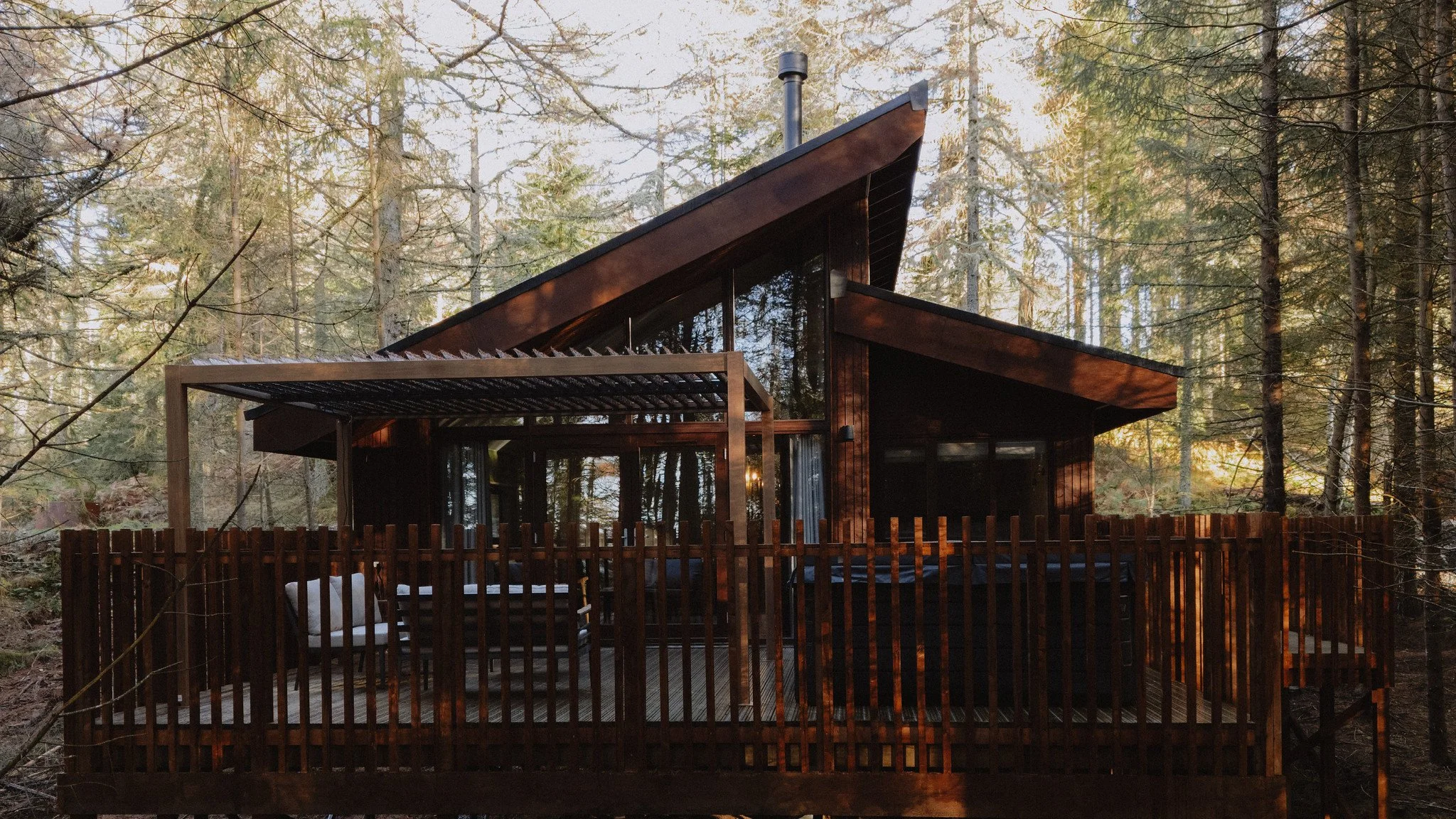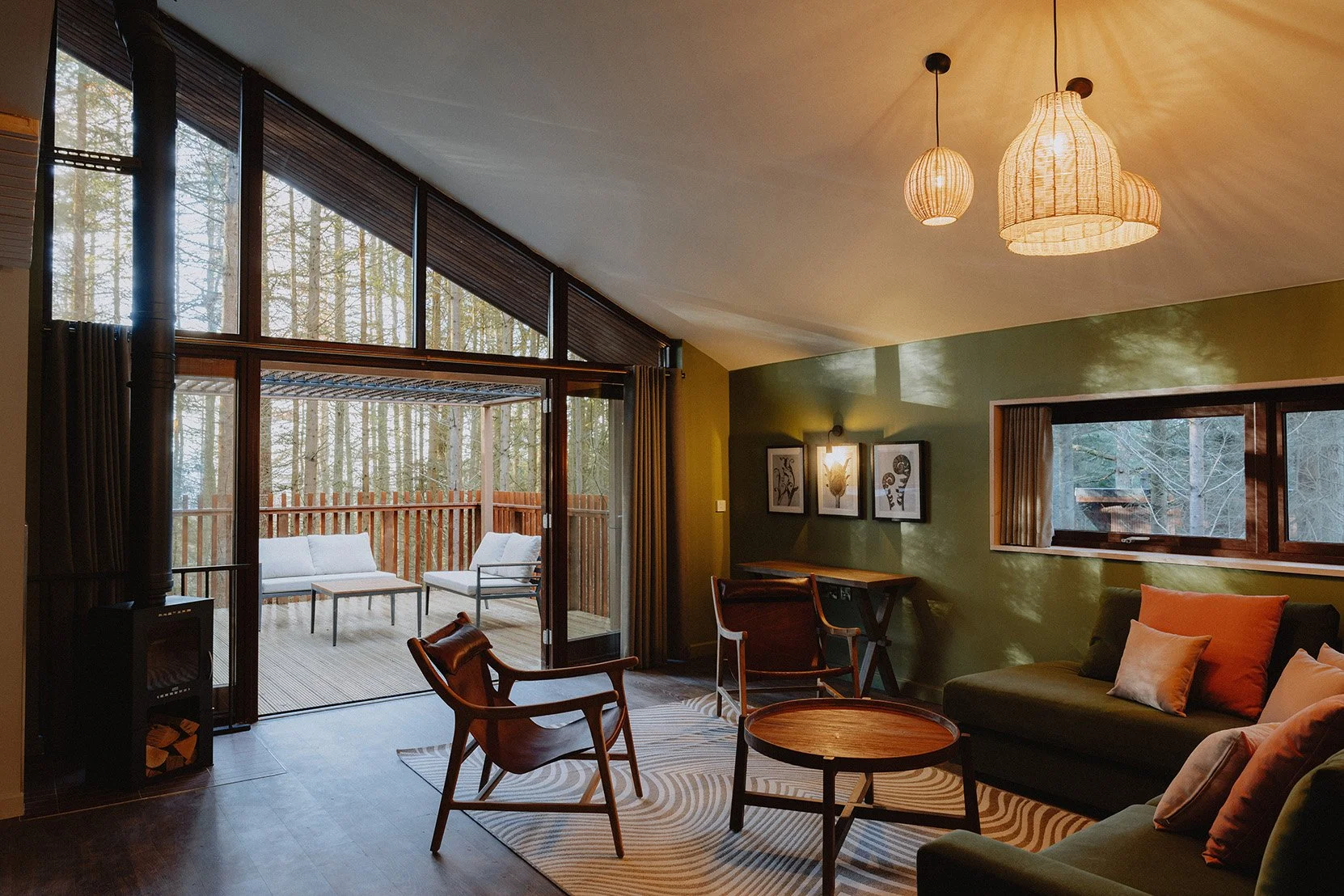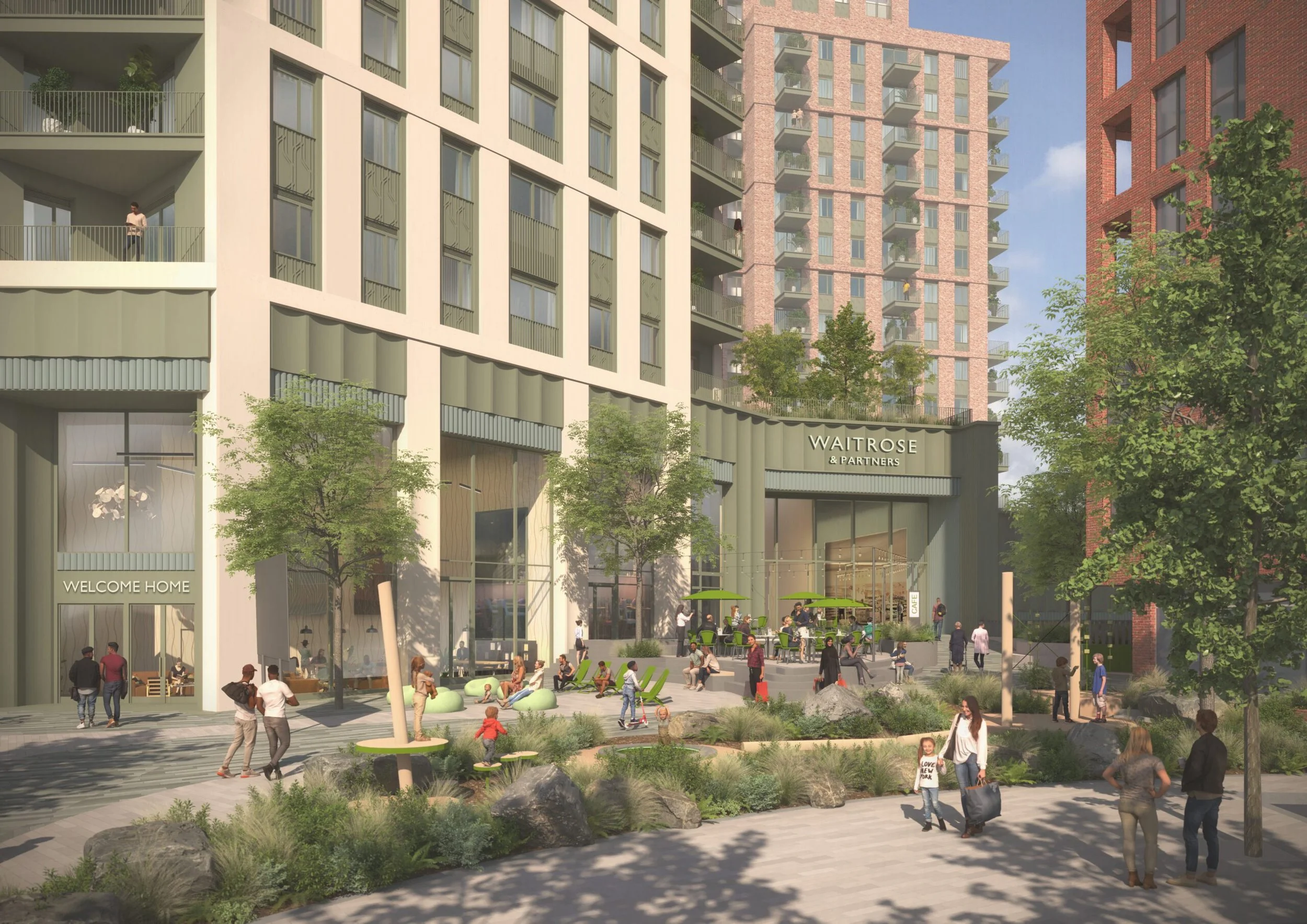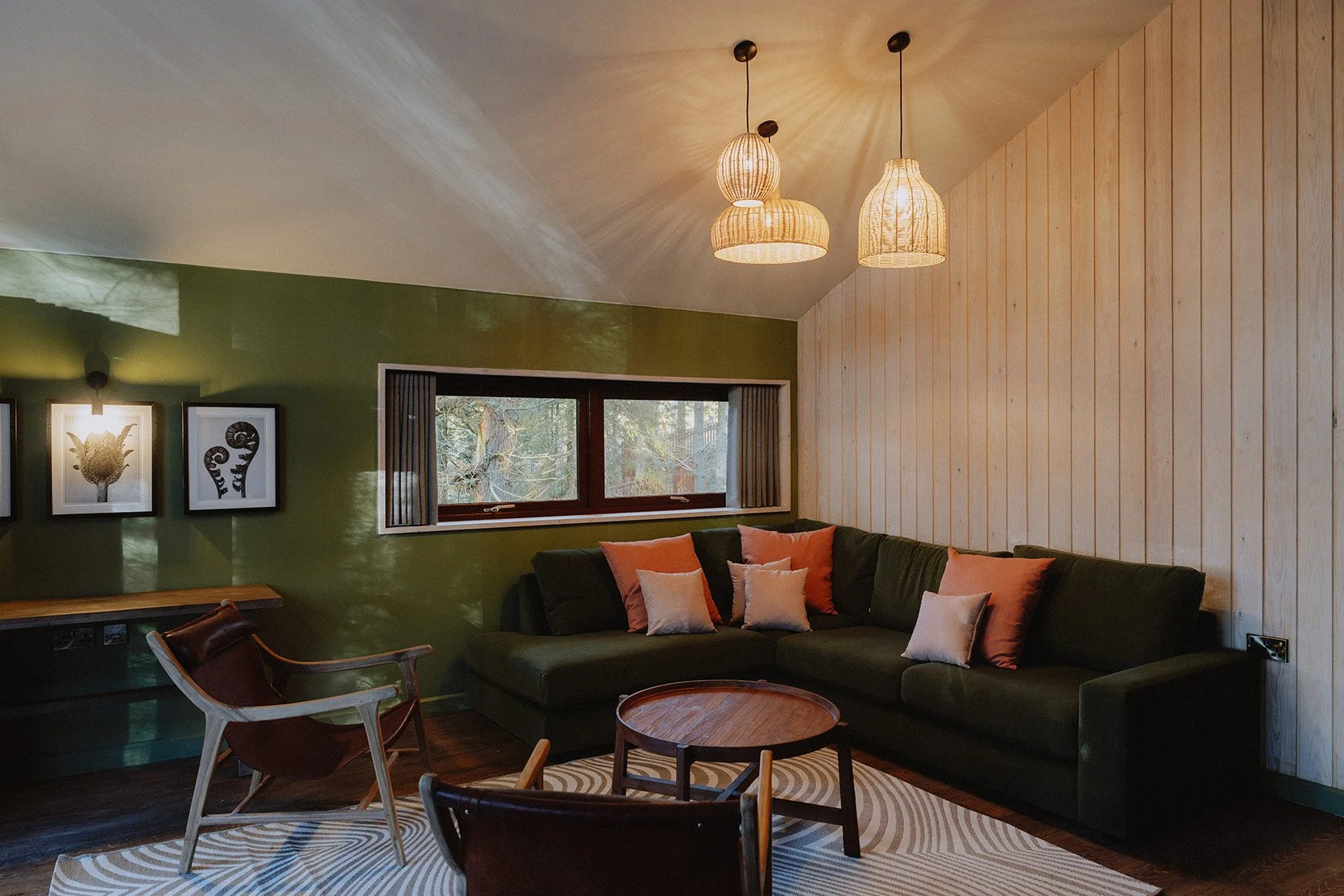"We're facing enormous challenges - climate crisis, biodiversity loss, social and economic inequity. These are complex, interlinked issues that we cannot solve by simply focusing on embedded and operational carbon." In the urgent battle against climate change, the built environment stands at a critical crossroads. Oliver Heath, well known global biophilic design expert, explains how Biophilic Design offers a transformative approach that goes far beyond superficial sustainability efforts.
Biophilic design represents a holistic solution, reimagining our built spaces as living, breathing ecosystems that support not just human health, but the wellbeing of all life. It's a radical departure from traditional sustainability approaches that narrowly target carbon reduction.
Image courtesy of Forest Holidays
Oliver argues that true sustainability requires a systemic approach. "We need to take a wider view, not just a carbon tunnel vision," he emphasises. This means considering interconnected challenges like resource scarcity, water crises, air pollution, and biodiversity loss.
The key lies in understanding our fundamental connection to nature. Biophilic design recognises that humans have an evolutionary inheritance - a genetic predisposition to connect with natural environments. By integrating natural elements, patterns, and sensory experiences into our buildings, we can create spaces that simultaneously support human health and environmental sustainability.
Addressing the greenwashing epidemic, Oliver suggests a multi-faceted approach. "It's not just about putting plants in a corner," he warns. Instead, organisations must consider the entire lifecycle of materials, from sourcing to disposal, and how each design decision impacts broader ecological systems.
Image courtesy of Forest Holidays
Practical implementation involves several critical strategies:
1. Pre- and Post-Occupancy Evaluations
Companies can measure the real impact of design interventions. In one project with Knight Frank, targeted biophilic design interventions resulted in remarkable outcomes: an 18% increase in productivity, 22% improvement in meetings, and a 28% boost in overall wellbeing.
2. Diverse and Inclusive Design
Recognising that people experience environments differently, biophilic design creates spaces that support various sensory needs. "Over 15% of the population is neurodivergent," Heath notes. "We must design environments that support everyone's comfort and potential."
3. Comprehensive Standards
While current building regulations fall short, non-mandatory standards like the WELL Building Standard and Living Building Challenge provide frameworks for genuine sustainable practices. These standards look beyond carbon, examining air quality, materials, water usage, and community impact.
John Lewis image: Assael Architecture
The economic argument is compelling. Buildings designed with biophilic principles are more likely to retain value, attract talent, and reflect progressive organizational values. As Heath puts it, "Companies are recognising that nature connection isn't just aesthetic - it's a fundamental strategy for creating more successful, innovative environments."
Case studies demonstrate the potential. A project with John Lewis transformed residential spaces by creating a "green thread of wellbeing" - integrating natural elements from external gardens through interior spaces, enhancing community connection and individual wellbeing.
Image courtesy of Forest Holidays
Education is crucial. Interior Design Declares, a movement Oliver helped establish, encourages professionals to commit to regenerative design principles. Their 12 pledges focus on raising awareness, sharing knowledge, and challenging traditional design approaches.
"The biophilic future is already here," Heath argues, adapting a quote from author William Gibson. "It's just not very evenly distributed."
For businesses, designers, and policymakers, sustainable design must be holistic, considering the intricate web of human and ecological interactions. Biophilic design offers a comprehensive framework that goes beyond carbon reduction, creating spaces that genuinely support life in all its complexity.
As we face unprecedented environmental challenges, biophilic design isn't just an option - it's a necessity. It represents a profound reimagining of our relationship with the built environment, where every design decision becomes an opportunity to support, regenerate, and celebrate life.
https://www.oliverheathdesign.com
Design a Healthy Home: https://www.oliverheathdesign.com/our-projects/book-design-a-healthy-home
Biophilic Design in the Home course: https://oliverheathdesignschool.thinkific.com/
Oliver will be speaking at the Biophilic Design Conference London 2025
Portrait of Oliver in the title screen courtesy of Richard Hanson
Have you got a copy of the Journal? You can now subscribe as a member of the Journal of Biophilic Design or purchase a gorgeous coffee table reference copy or PDF download of the Journal journalofbiophilicdesign.comor Amazon and Kindle.
Biophilic Design Conference www.biophilicdesignconference.com
Credits: with thanks to George Harvey Audio Production for the calming biophilic soundscape that backs all of our podcasts.
Listen to our podcast on Audible, Amazon Music, Spotify, iTunes, YouTube and all the RSS feeds.
https://www.facebook.com/journalofbiophilicdesign/
https://twitter.com/JofBiophilicDsn
https://www.linkedin.com/company/journalofbiophilicdesign/
https://www.instagram.com/journalofbiophilicdesign
If you like this, please subscribe!



